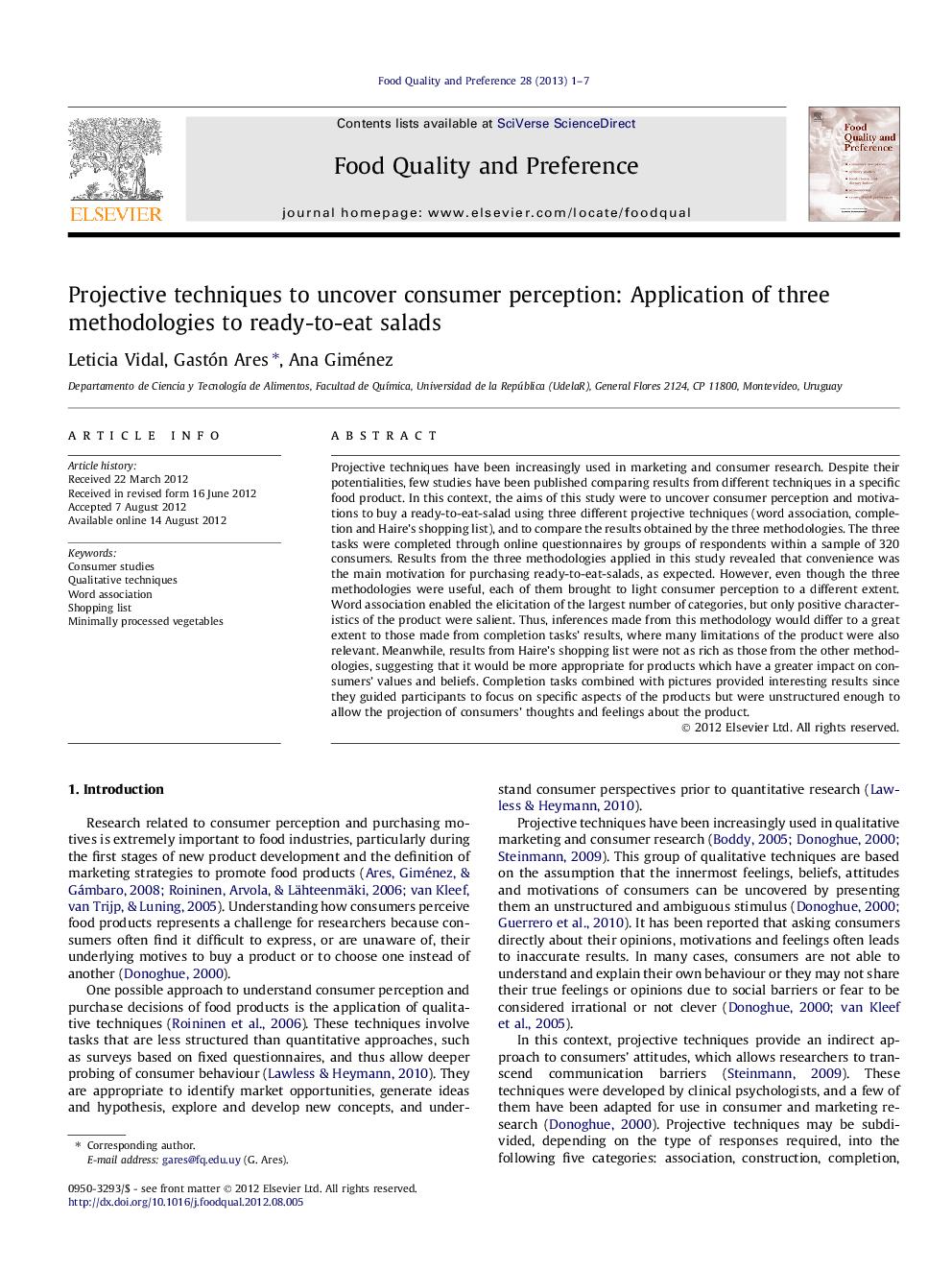| Article ID | Journal | Published Year | Pages | File Type |
|---|---|---|---|---|
| 4317347 | Food Quality and Preference | 2013 | 7 Pages |
Projective techniques have been increasingly used in marketing and consumer research. Despite their potentialities, few studies have been published comparing results from different techniques in a specific food product. In this context, the aims of this study were to uncover consumer perception and motivations to buy a ready-to-eat-salad using three different projective techniques (word association, completion and Haire’s shopping list), and to compare the results obtained by the three methodologies. The three tasks were completed through online questionnaires by groups of respondents within a sample of 320 consumers. Results from the three methodologies applied in this study revealed that convenience was the main motivation for purchasing ready-to-eat-salads, as expected. However, even though the three methodologies were useful, each of them brought to light consumer perception to a different extent. Word association enabled the elicitation of the largest number of categories, but only positive characteristics of the product were salient. Thus, inferences made from this methodology would differ to a great extent to those made from completion tasks’ results, where many limitations of the product were also relevant. Meanwhile, results from Haire’s shopping list were not as rich as those from the other methodologies, suggesting that it would be more appropriate for products which have a greater impact on consumers’ values and beliefs. Completion tasks combined with pictures provided interesting results since they guided participants to focus on specific aspects of the products but were unstructured enough to allow the projection of consumers’ thoughts and feelings about the product.
► Consumer perception of a ready-to-eat salad was studied using three projective techniques. ► Word association, completion tasks and Haire’s shopping list provided useful information. ► Word association provided the largest number of categories. ► Completion tasks guided participants to focus on specific aspects of the products.
